Schwarz
View current page
...more recent posts
IN its not-so-brief and thoroughly unhappy life, ground zero has been a site for many things: tragedy and grief, political campaigns and protests, battling architects and warring cultural institutions, TV commercials and souvenir hustlers. Perhaps it was inevitable we'd end up at pure unadulterated farce.
That's where we are as of this Memorial Day weekend. A 1,776-foot Freedom Tower with no tenants - and no prospect of tenants - has been abruptly sent back to the drawing board after the Marx Brothers-like officials presiding over the chaos acknowledged troubling security concerns about truck bombs. But truck bombs may be the least of the demons scaring away prospective occupants. The simple question that no one could answer the day after 9/11 remains unanswered today: What sane person would want to work in a skyscraper destined to be the most tempting target for aerial assault in the Western world? As if to accentuate this obvious, if frequently suppressed, psychological bottom line, news of the Freedom Tower's latest delay was followed like clockwork by a Cessna's easy penetration of supposedly secure air space near the White House, prompting panicky evacuation scenes out of the 50's horror classic "The Day the Earth Stood Still."
why we should build apartments at ground zero
The FreedomTower, with or without its fancy spire, is an unnecessary building. The planned skyscraper, which will contain 2.6 million square feet of commercial office space, doesn’t have a single tenant – an unsurprising fact, since the demand for commercial office space in lower Manhattan is so small that it can barely be said to exist. The tower, it seems, is being built not to ennoble, enliven, or enrich the city but to satisfy the narrow, self-interested agendas of Silverstein, who leased the TwinTowers in 2001, and the Port Authority, which build the WorldTradeCenter and still controls the land. Silverstein, for his part, is largely building with insurance money instead of borrowing, as developers usually do, and he figures that he will be well positioned in the unlikely event that the lower Manhattan office market rebounds. Meanwhile, the Port Authority receives ten million dollars a month in rent that Silverstein still pays, under the terms of his lease.
The glamorous era of New York preservation - the outcry over the demolition of the old Pennsylvania Station, Jackie Onassis picketing to save Grand Central Terminal - is long over.
But judging from Tuesday's weak-kneed decision by the city's Landmarks Preservation Commission to approve a scaled-back expansion of the Whitney Museum of American Art, certain New Yorkers have failed to catch on. To them, apparently, the overreaching goal is saving what's old - as if the loss of an undistinguished brownstone parallels the razing of a beloved landmark.
Essentially, for the sake of preserving a humdrum brownstone facade on Madison Avenue, the commission embraced a substitute design for the museum that transforms a generously proportioned public entrance into a more confining experience. The architect, Renzo Piano, drafted the alternative - which would save that brownstone, while demolishing another - when the museum realized that the addition was in danger of being voted down by the commission.
Aside from weakening a promising design, the commission's stubbornness proves that it is unable to distinguish between preserving the city's architectural legacy and embalming it. This is particularly galling given that the commission steadfastly refuses to meet on Edward Durell Stone's endangered 60's "lollipop" building at 2 Columbus Circle - a building that is far more essential to the city's historical fabric.
im in total agreement with ouroussoff on the whitney expansion and stones 2 columbus circle
Taken together, the two cases imply a complete disconnect with the changing realities of preservation in New York City. It is as if the commission believes that New York is still living under the threat of tabula rasa Modernism.
We no longer live in the 1960's. There is no Robert Moses, with the power to bulldoze entire neighborhoods in the name of urban progress. Jane Jacobs, the activist who took him on, now lives in Toronto. The old tradition-vs.-Modernism battles are irrelevant. On the contrary, many Modernist buildings are now landmarks worthy of preservation.
the chrysler building at 75
Last week, 30 volunteers spent a day spiffing up a drive-in movie theater in Tulsa, Okla.
The Admiral Twin Drive-in, which opened in 1951 as the Modernaire, was the backdrop for a scene in Francis Ford Coppola's 1982 film, "The Outsiders."
Volunteers painted the drive-in's rusted microphone stands, bathrooms, and concession stand. This week, workers will landscape the 38-acre site and update the marquee, ticket booth, and concession stand.
"Nine excellent 5" x 3 1/3" snapshot photos of a good sized tank being installed. It looks like a water tank. The photos are dated Oct. 1959. The first two pictures look like they have a blueish tint but they don't.The crane truck moving the tank has a Charleston WVA address on the door. The smaller flatbed trailer truck says Fred C. Burns Marlinton WVA."
herman miller babble
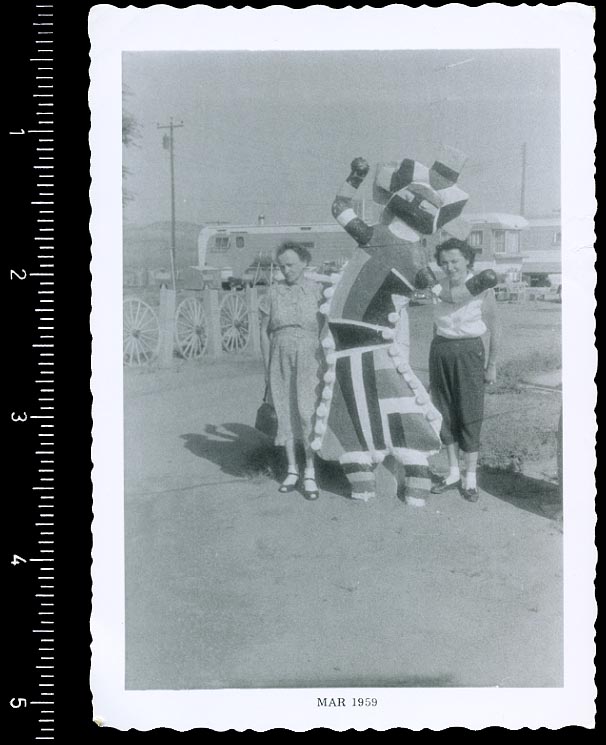
stream afropop
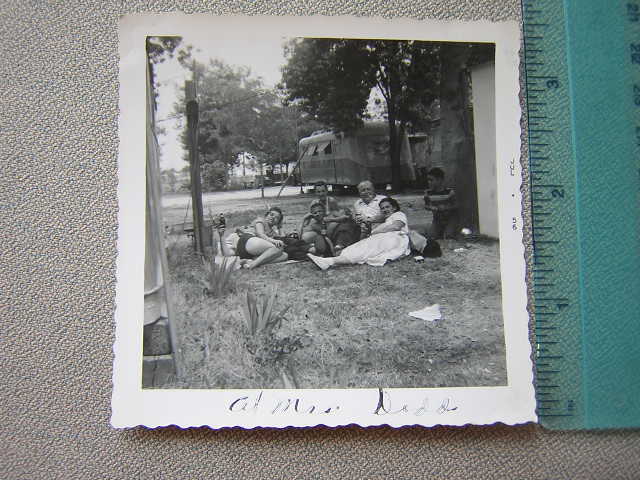
lords of dogtown prereview :
it fuckin' rocks!
In the Guggenheim, your eye is usually drawn away from the art to its soaring center space. Buren reverses this in a very John Cage way. Having the walls empty creates a void that the eye and mind fill. Unexpected things come into high focus: cracking walls, paint swellings and serrations, dust bunnies, and missing and broken panes of glass. The Guggenheim comes alive in new ways, entropy emerges as an aesthetic quality, and the whole museum turns into a living Thomas Struth photograph. You can make out where parts of "The Aztec Empire" exhibition recently were, or where Matthew Barney climbed the parapet. Not only is this fairly thrilling and wistful, it makes you recognize how every detail is crucial in the delivery mechanisms of art that we call museums.
design*sponge throws shit fit"wrong sponge"? wait till she hears about design losing its edge.

hot 45k singlewide
[....]
Design's cutting edge has been removed because there are too many children at the table now for anything sharp, and the fashion heat of only a few years ago - which generated singles-only magazines like Wallpaper, with its label-lust crossovers from clothing to interior design - has become a usable stylishness, as in casual work clothes that translate easily to the occasional party.
Wallpaper's place in the sun has become Dwell's, with its young family-values version of high design: the return of domesticated thinking like Mary and Russel Wright's. And not coincidentally, of prefabricated housing: a prefab FlatPak house, designed by Charlie Lazor, a Minneapolis architect, was exhibited as a product, the largest piece of furniture at the fair.
But in terms of design's potential to invent and imagine, to solve and foresee, to anger or excite, it's a post-fab, as in fabulous, moment. The proliferation of makeover shows on television, on which your home can be shown the door in 30 commercially interrupted minutes, makes it clear just how shallow the pool of thought is in contemporary design.
[....]
Early film-makers delighted in capturing cities on screen. Their work takes us on a tram ride back in time, says Patrick Keiller . Until the mid-1900s, most films were one to three minutes long, and consisted of one or very few unedited takes. The Lumière company's films, for example, are typically 48 to 52ft long and last about a minute. They were made by exposing a complete roll of film, usually without stopping. Most were actualities, not fiction. Cinematographers would sometimes pause if there was a lull in the action, or if the view was blocked, but other kinds of editing were unusual. The reconstruction of time by joining individual shots together was an aspect of film-making that began to dominate only after about 1907.
Shigeru Ban is called the "paper architect." Mister Ban is an architect in Tokyo known for his designs of temporary shelters made of paper. Many of his designs, such as the "Paper Log House," are built with used cardboard tubes.
Mister Ban designed such houses for people in Kobe, Japan, after the nineteen ninety-five earthquake there. He also designed a community gathering place. More recently, his paper houses provided shelter for people in Turkey and India after earthquakes hit those countries.
screen goo via alex
also ran : shoe goo
gunge : read at your own risk
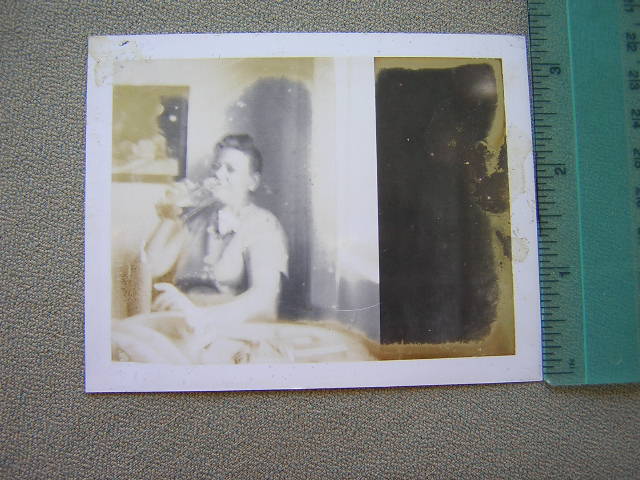
(untitled) polaroid
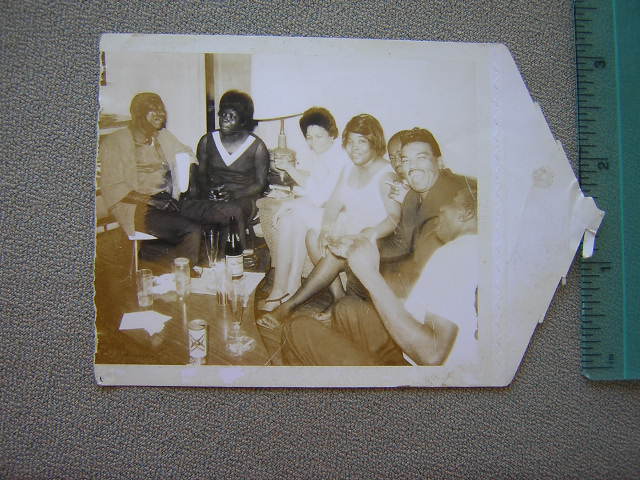
(untitled) polaroid
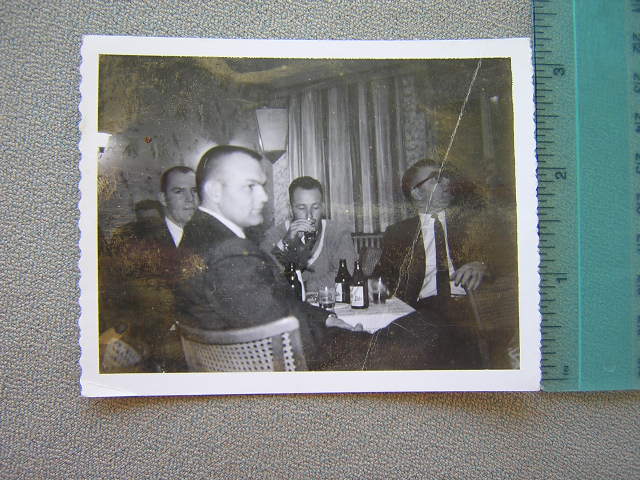
(untitled) polaroid
There are three stories about where the first demolition derby was held. Islip Raceway (Long Island, NY), Hales Corner Raceway (Hales Corner, WI), and an unknown town in Ohio. The first and only story with creditable proof is that Larry Mendelson, a 28 year stock car racer noticed that the most cheering and excitement happened when cars crashed. He held the first demolition derby in 1958 at Islip Raceway. Another story is that Hales Corner Raceway had held a demo years previous to Islip. According to legend, 'Crazy Jim' Groh had a few too many cars on his dealership lot. So he got a few people to drive them as a promotion. The only other proof to back this story are the Happy Days episodes 64, 64, 66 'Fonzie loves Pinkie ...got 24 bucks?
walls of new york
In the immediate aftermath of 9/11, Fareed Zakaria wrote a 6,791-word cover story for Newsweek titled "Why Do They Hate Us?" Think how much effort he could have saved if he'd waited a few years. As we learned last week, the question of why they hate us can now be answered in just one word: Newsweek.
"Our United States military personnel go out of their way to make sure that the Holy Koran is treated with care," said the White House press secretary, Scott McClellan, as he eagerly made the magazine the scapegoat for lethal anti-American riots in Afghanistan. Indeed, Mr. McClellan was so fixated on destroying Newsweek - and on mouthing his own phony P.C. pieties about the Koran - that by omission he whitewashed the rioters themselves, Islamic extremists who routinely misuse that holy book as a pretext for murder.
That's how absurdly over-the-top the assault on Newsweek has been. The administration has been so successful at bullying the news media in order to cover up its own fictions and failings in Iraq that it now believes it can get away with pinning some 17 deaths on an errant single sentence in a 10-sentence Periscope item that few noticed until days after its publication. Coming just as the latest CNN/Gallup/USA Today poll finds that only 41 percent of Americans think the war in Iraq is "worth fighting" and only 42 percent think it's going well, this smells like desperation. In its war on the press, this hubristic administration may finally have crossed a bridge too far.
Let's stipulate flatly that Newsweek made a serious error. For the sake of argument, let's even posit that the many other similar accounts of Koran desecration (with and without toilets) by American interrogators over the past two years are fantasy - even though they've been given credence by the International Committee of the Red Cross and have turned up repeatedly in legal depositions by torture victims and in newspapers as various as The Denver Post and The Financial Times. Let's also ignore the May 1 New York Times report that a former American interrogator at Guantánamo has corroborated a detainee's account of guards tossing Korans into a pile and stepping on them, thereby prompting a hunger strike. Why don't we just go all the way and erase those photographs of female guards sexually humiliating Muslims (among other heinous crimes) at Abu Ghraib?
Even with all that evidence off the table, there is still an overwhelming record, much of it in government documents, that American interrogators have abused Muslim detainees with methods specifically chosen to hit their religious hot buttons. A Defense Department memo of October 2002 (published in full in Mark Danner's book "Torture and Truth") authorized such Muslim-baiting practices as depriving prisoners of "published religious items or materials" and forcing the removal of beards and clothing. A cable signed by Lt. Gen. Ricardo S. Sanchez called for interrogators to "exploit Arab fear of dogs." (Muslims view them as unclean.) Even a weak-kneed government investigation of prison abuses (and deaths) in Iraq and Afghanistan issued in March by Vice Adm. Albert T. Church III of the Navy authenticated two cases in which female interrogators "touched and spoke to detainees in a sexually suggestive manner in order to incur stress based on the detainees' religious beliefs."
[....]
